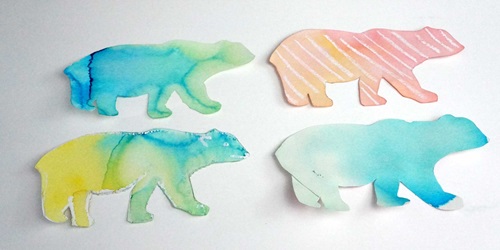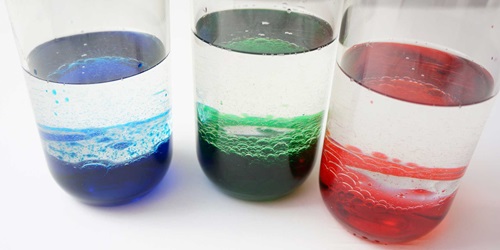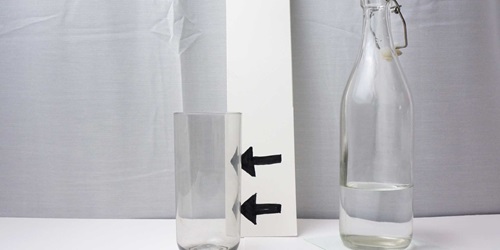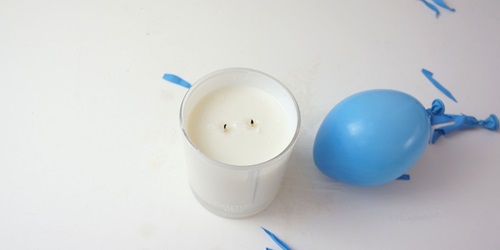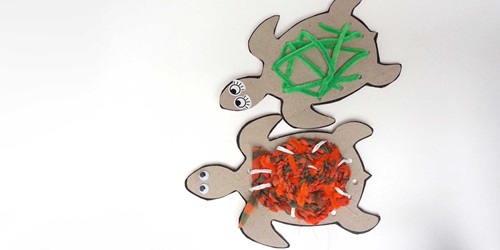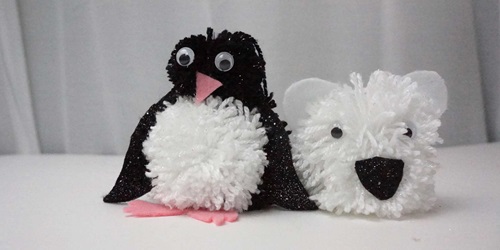Enjoying science play and simple experiments with children is a fun and easy opportunity to foster their curiosity and problem solving skills.
Have you ever wondered what the climate on earth was like hundreds or thousands of years ago?
Ice cores can be used to examine how climate has changed over time in a particular region. You would normally make ice cores with regular water, coffee dissolved in water, leaves, gravel and so on for the various layers. Just for fun we’ve made ours with edible ingredients so we can crush up our ice core into a delicious treat at the end of all that hard core scientific investigation.
Suitable for ages: Primary and up
Time required: 30 minutes (however each layer needs to be frozen separately so may take up to 4 days)
Difficulty: 2 out of 5
Related Exhibition: Elysium Arctic

Did you know... as well as the Elysium Arctic expedition there was a previous expedition called the Elysium Antarctic expedition. Both expeditions took scientists, musicians, artists, photographers and filmmakers to these polar environments to capture the effects of changing climates on the regions and to create art, images and exhibitions that would affect our actions as humans in protecting vulnerable animals and caring for our environment.
Climate change can be a very complex idea to describe to learners of any age. Polar environments and how they are impacted by changes in sea ice, sea levels and temperature is a big concept. So we’ve collected together a few simple experiments can be a tangible and memorable ways to delve into this idea.
Ice cores are used by scientists to learn about environmental conditions in the past before people were around to write about them. Each layer of ice provides information about the amount of snow that a glacier had in a year. These layers can also contain materials such as ash from forest fires and volcanoes, dust picked up by winds, as well as pollen and insects. Some of these materials are visible to your eyes, others need to be measured with special technology to be seen.
Polar Science Experiment: how to make edible ice cores

- A Pringles can
- 100 ml measuring cylinder
- Refrigerated water
- Refrigerated water with dissolved cocoa and sugar
- Chocolate dots (to represent heavy sediment/rocks)
- Jelly insects
- Freezer
To Make:
Step 1.
Add 110ml water (this will represent an average snowfall/ precipitation year). Mark where it is up to on the outside so you remember which layers you have added and which ones are yet to go.

Step 2.
Freeze your first layer (so the layers don’t blend together you have to wait until it is completely frozen). Add 60ml of cocoa water. Mark and freeze.

Step 3.
Add 60ml cocoa water plus some chocolate rock sediment. Swirl it around, mark it on the outside and freeze completely.

Step 4.
For the next 6 layers use variations of 60-110ml of water, and mix jelly insects into one layer. Freeze each layer as you go.

Step 5.
Once your last layer is completely frozen, peel off the outside of the Pringles can and examine your ice core.

Step 6.
Using a whiteboard, chart paper or a work book, a ruler and a marker or pencil, start your ice core investigation.

Draw a diagram and add notes describing what you see in your ice core. You will see we didn’t wait long enough to freeze our first layer completely so it bled together with other layers.
Start interpreting the layers – remember the top layer is the youngest and the bottom is the oldest.
Are they short or tall?
How much precipitation or snow fall was in each year?
Are there other sediments that could have been from a natural event?
Are there creatures trapped in there you could analyse further?
Has the climate for your ice core’s location changed over time?
What conclusions could you draw from this sample?
We’d love to see your creations!
Please send us photos either by email to: web@sea.museum or tag us on Instagram - just tag the photo with our username @sea.museum
You might also enjoy...

